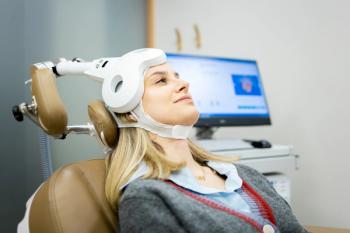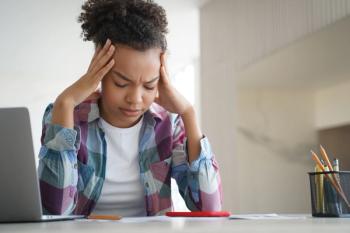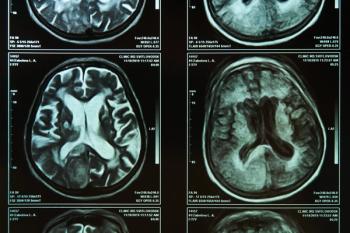
What Is an Adequate Dose of an Antidepressant?
In the treatment of depression, clinicians are often faulted for failing to give an antidepressant medication at a high enough dose. What is high enough? Answering this question turns out to be tricky.
In the treatment of depression, primary care providers are often faulted for failing to give an antidepressant medication at a high enough dose. What is high enough? Answering this question turns out to be tricky.
Defining roughly equivalent doses of antidepressants is challenging enough. A
Many practitioners regard 20 mg of fluoxetine an inadequate dose for a full trial. They would routinely increase to 40 mg before allowing a conclusion of “been there, done that.” By extension, the dose equivalence Table might suggest that doses in the right-hand column are minimums for fairtrials of each of these medications. But an examination of available data does not support this practice. Indeed, 5 mg of fluoxetine might be enough.
For medications with flat dose-response relationships, a low dose may provide the same opportunity for improvement as a higher dose. For example, from compilations of fixed-dose randomized trials, psychopharmacologist Sheldon Preskorn2 prepared 3 very important graphs,
[[{"type":"media","view_mode":"media_crop","fid":"38936","attributes":{"alt":"antidepressants","class":"media-image media-image-right","height":"122","id":"media_crop_7261940819378","media_crop_h":"0","media_crop_image_style":"-1","media_crop_instance":"4042","media_crop_rotate":"0","media_crop_scale_h":"0","media_crop_scale_w":"0","media_crop_w":"0","media_crop_x":"0","media_crop_y":"0","style":"float: right;","title":"©TheLen/Shutterstock.com","typeof":"foaf:Image","width":"188"}}]]Indeed, many practitioners would have increased the dose at 2 or 3 weeks for a complete non-responder (do you wait 4 weeks before another step?). For a medication with a linear dose-response relationship, that would certainly be rational: the higher the dose, the more likely the patient is to respond. Many practitioners, including Dr Preskorn, regard venlafaxine as an example of this relationship. But Dr Berney, reviewing the same data, did not find evidence for a dose-response relationship in any of the antidepressants in the Table, even venlafaxine. (Tricyclics are different, with curvilinear relationships such that checking blood levels to avoid going “over the top” is warranted.)
Since pushing the dose of SNRIs can increase blood pressure as well, Dr Berney’s analysis raises some doubt about this common approach. She suggests 75 mg may be an adequate dose for full trial of venlafaxine. Before dismissing her analysis on the basis of this low number, have a look at her paper, full-text online. She examines each of the available studies very closely.
Yet in an interesting logical twist on all this, Stanford's Drs
Based on that logic, Solvason and DeBattista conclude that increasing dosages in patients who do not respond to an initial doseis not unreasonable. But they also point out that based on the data we have for SSRIs, “simply remaining on the minimum therapeutic dose . . . may improve response as much as increasing the dose”4 (Optimal Dosing of Antidepressant Classes; paragraph 2,
In other words, if the patient is not improving on a starting dose (eg, fluoxetine 10 mg, sertraline 50 mg, escitalopram 5 mg), doubling the dose in non-responders is reasonable. Indeed, over
Two more conclusions to derive from all this: first, suggesting that primary care colleagues do not use adequate doses of antidepressants is not warranted. It may have been, back in the days of tricyclic antidepressants, which do have demonstrable minimum thresholds based on blood levels. But the analyses cited here do not support this remonstration of primary care for modern antidepressants.
Secondly, a daunting correlate: perhaps we should not be congratulating ourselves if in consultations we advocate increasing antidepressant doses and observe patients improve. Dose-response data suggest that other factors are more likely to account for those gains.
Disclosures:
Dr Phelps is Director of the Mood Disorders Program at Samaritan Mental Health in Corvallis, OR. He is the Bipolar Disorder Section Editor for Psychiatric Times. [
References:
1. Hayasaka Y, Purgato M, Magni LR, et al. Dose equivalents of antidepressants: Evidence-based recommendations from randomized controlled trials. J Affect Disord. 2015;180:179-184.
2. Preskorn S. 5 - How SSRIs as a Group Are Similar. In Preskorn S. Clinical Pharmacology of SSRI's. Caddo, Ill: Professional Communications, Inc.; 1996.
3. Berney P. Dose-response relationship of recent antidepressants in the short-term treatment of depression. Dialogues Clin Neurosci. 2005;7:249–262.
4. Solvason H, DeBattista C. Antidepressant Dosing for the Acute Treatment of Unipolar Depression. Prim Psych. 2009.
5. Fredman SJ, Fava M, Kienke AS, et al. Partial response, nonresponse, and relapse with selective serotonin reuptake inhibitors in major depression: a survey of current “next-step” practices. J Clin Psychiatry. 2000;61:403–408.
Newsletter
Receive trusted psychiatric news, expert analysis, and clinical insights — subscribe today to support your practice and your patients.













